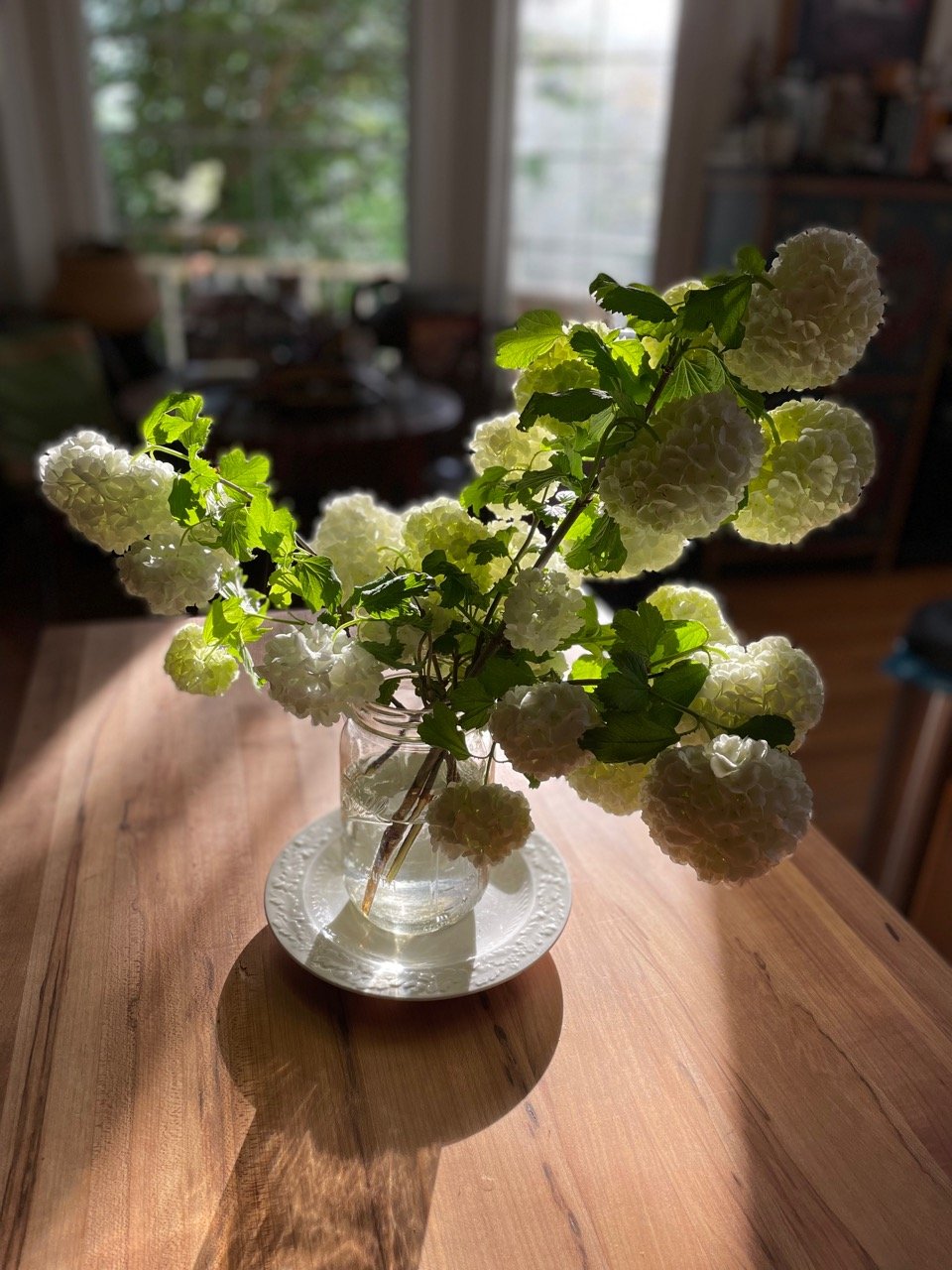whacking in a garden
SO, you all have your winter-weathered compost pile turned and that garden spade with a strong smooth handle and a clean sharp blade at the ready, right? Us? Not so much. We always have ambitions for a black gold yielding compost from our zero waste kitchen goings-on, but have fallen short— defeated by inefficient countertop containers (hullo, bugs and smell) or underperforming barrel tumblers (who has the arm strength to dig that thing out? who?).
We have largely embraced porch containers for those things we most want to pluck: tomatoes, usually small, peppers, and herbs. Benign neglect being the order of the day, anything planted in the greater garden must do well pretty much on its own— and, since, there is serious debate about how much tilling is good for the planet, were are erring on the side of low disturbance of the soil.
We have come round to not only saving the soil, but eliminating the unnatural lawn as much as possible. We’ll be getting into the whys and wherefores from the effects of the devastating loss of insect life to the benefits of healthy biodiversity. We have eliminated much of the mown grass on our patch, planted for seasonal picking and use for birds, wildlife— and, oh, us as well!
Healthy planting areas are alive with motion— bees, beetles, worms, butterflies and birds, birds, birds…
Enough for all and plenty to share.
wreath making: fresh cut from the garden
If fresh decoration is needed for a short term event, a wreath makes a great stand-in for a cut flower arrangement. With a few pieces of equipment, twining together simple greens, with or without flowers that hold up out of water, can be the answer for low-cost, high-impact decor. Of course they look wonderful and welcoming on doors, but can be hung in windows or laid on tables for a bright reminder of the outdoors.
Garden or yard greens and floral elements are fleeting, but allowing them to condition, preferably overnight, in cool water in a clean bucket, should keep them looking good for hours. Some greens from the garden, especially evergreen varieties, can last for several days. We construct our fresh wreaths with a base of evergreen branches. Surprise, you all— “evergreen” does not have to mean spruce, fir, cedar, or pine! Look out for varieties of juniper, cypress, soft hollies, arborvitae, cryptomeria, euonymous, laurels, ivies, and curly privet as some examples of lovely background foliage. If you are in a position to plant these varieties at home, they come in handy for money saving elements for all floral arrangements. Check with your local nursery for what grows best in your area— and try to plant native varieties whenever possible!
After grooming greens, snip larger branches, if necessary, into 8-12” sections. Lay the sections along each other to form a fulsome line. Twist the end of green floral paddle wire at the beginning of a line of branch sections and gently, but securely, wind the paddle of wire around the stems and in between the leaves such that the stems are held, but leaves are not all mashed together.
When ready to assemble a fresh wreath, trim off any discolored or tatty leaves, bare branches or dry areas, roots from ivy, and any really new growth as it will be too delicate to hold up out of water.
Add in sections of branches or stems, continuing to gently wind the wire, until the desired wreath circumference is achieved.
We often include flowering branches such a shrub roses, limelight or other hydrangeas or less tender cut flowers such as rudbeckia, black eyed susans, cone flowers, blue sea holly, lavender, and zinnias.
Once you have the length of wreath you want, lay flowering stems or branches along the leaves as you wind the paddle wire around as you go, securing everything in place. Overlay the two ends of branches and flower line to form a circle. Wrap tightly with wire to hold ends. Cut the wire with wire cutters and twist tightly, bending the wire ends down into the structure of the wreath so no sharp points are left. Check overall appearance. Wire in leaves or flowers wherever needed to fill out less fulsome areas. Don’t forget to add a twist of wire as a hanger!
Mirror, mirror on the wall, who is the prettiest of them all? A wreath that has made a visit to the “ladies” or “gents” or “the bath chamber of the all-thing,” we are all inclusive here… the point is to check out your creation in a mirror. Amazing how our eyes “tire” of looking at any work and a mirror image forces a new perspective and often reveals any deficits that might need amending. Alternatively, take a picture, walk away from your project and take a look!












